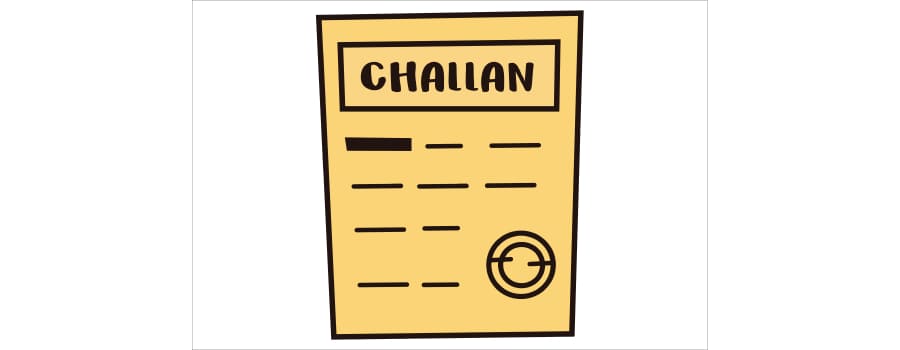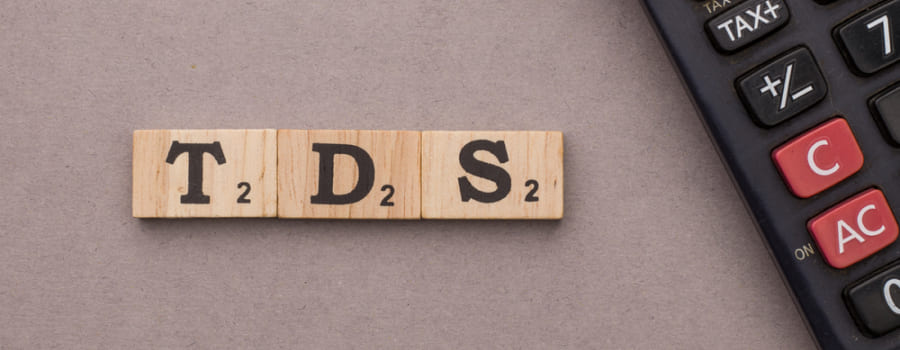In India, income tax* payment procedures have gone through a range of reformations to accommodate simple and quick management of transactions by the Government, the Reserve Bank of India, the corporations, and the individual taxpayers.
TDS is one concept that focuses on paying taxes as you earn. And, TDS challan is a way to facilitate its processing. Every individual taxpayer should know what TDS challan means and their types to understand the tax-paying process. So, let us get started and know it better here.
Before we understand the TDS challan, let us get introduced to TDS.
What is TDS?
TDS is Tax Deducted at Source, a type of direct tax collected from the individuals when making payments such as the salary, commission, rent, professional fees etc. This tax deducted at source is paid by deductor to the credit of the Government. The Central Board Of Direct Taxes regulates the provisions of TDS according to the Income Tax Act, 1961.
What is TDS Challan?
TDS Challan is the form used to deposit the TDS or the Tax Collected At Source (TCS) to the Government. The government primarily introduced it to reduce human error and manage the online transaction of tax collection, deposit, and refund, if any.
The payer responsible for making payments such as salary, commission, interest, etc., is accountable to deduct a certain percentage of the amount from the total amount payable, before making the payment to the payee or the employee. Individual taxpayers can track the status of their TDS challan deposited in the banks when done online.
Types of TDS Challan

There are three types of TDS Challans. Every type is used to identify specific payments made to the Income Tax Department.
- Challan No. ITNS 280 - Used primarily for paying the Income Tax. It can be Self-Assessment Tax, tax on regular assessment, Advance Tax, tax on distributed profits or income, etc. The taxpayers can pay the respective tax either online or through a cheque. The taxpayers can use challan No. ITNS 280 irrespective of the payment mode.
- Challan No. ITNS 281 - It is a challan used primarily for depositing the Tax Deducted at Source or Tax Collected At Source.
- .Challan No. ITNS 282 - It is a challan used by taxpayers while making payments due to Gift Tax, Expenditure Tax, Wealth Tax, Securities Transaction Tax, Estate Duty, and Other Direct Taxes.
The government introduced three new single copy TDS challans for making the process even easier:
- Challan No. ITNS 283 - It is a challan to include the payments made for the Fringe Benefits Tax and the Banking Cash Transaction Tax.
- Challan No. ITNS 286 - It is a challan to include payments under the declaration of income.
- Challan No. ITNS 287 - It is a challan that includes payments done under Pradhan Mantri Garib Kalyan Yojana.
Challan No. ITNS 281
It is used for depositing the TDS and TCS by companies or non-corporate entities. The payer deducts TDS at a certain percentage of the payment made to the receiver, such as the salary, rent etc.
It is deducted before making the payment and then deposited to the Income Tax Department. The Tax Collected at Source is the type of tax collected from the buyer by the seller while engaging in the sale of specified goods.
Due Dates for Filing the TDS Challan Payment
TDS has to be paid to the credit of Income Tax Department by the assesses who have deducted the tax on or before prescribed dates following the date of the expenditure.
Due Date For Non-Government Assessee
- The due date is the 7th of next month for the tax to be deducted for months other than March. For instance, if the TDS payment is to be deposited for September, the due date will be the 7th of October.
- The due date is the 30th of April for the tax to be deducted for March.
Due Date For Government Assessee
- The due date is the same day for tax deposited without the challan.
- The due date is the 7th of next month for all the months.
In scenarios wherein the TDS is deducted on time but not deposited within the specified dates, an interest amount of 1.5% of the payable amount per month from the due date will be the charges on such a payable amount.
Steps to Initiate TDS Payment By Online Mode
- Login into the e-Tax Payment System website.
- Click Challan No. ITNS 281
- Fill in the details such as the TAN (Tax Deduction Account Number or Tax Collection Account Number) No., Address, Mode of Payment, Bank Name, etc.,
- Check the details and click on the Submit to Bank link.
- The net banking site of the respective bank will appear.
- Enter the credentials and the amount and click on submit.
The challan counterfoil appears on the screen for your reference with the CIN (Challan Identification Number) No., bank name, and the amount on successful payment. When you do the e-payment of TDS, the status of the challan deposited can be tracked online on the Tax Information Network website.
Steps for Offline Challan Process
- Download the excel format of the TDS challan.
- Enable editing and fill in the necessary details.
- Take a printout of the challan.
- Submit the challan along with the amount.
On submission, the bank will provide the counterfoil or the receipt back stamped as proof of submission.
While tax payments are mandatory, you as an individual taxpayer can benefit from the tax deduction and exemption benefits to reduce the net tax payable.
Conclusion
TDS or Tax Deducted At Source is a form of Income Tax Payment made while earning an income. It is paid to the government through the TDS challans. There are different types of challans introduced for specific Income Tax Payments. In addition, there is an online and offline mode to make payments using the TDS challans. You can track the status of the payments by accessing the Tax Information Network website. The introduction of the TDS challans streamlined collecting, accounting, and reporting the payment of taxes, and it is certainly done well!
L&C/Advt/2022/Nov/2914








 FOR EXISTING POLICY
FOR EXISTING POLICY 
 FOR NEW POLICY
FOR NEW POLICY 





